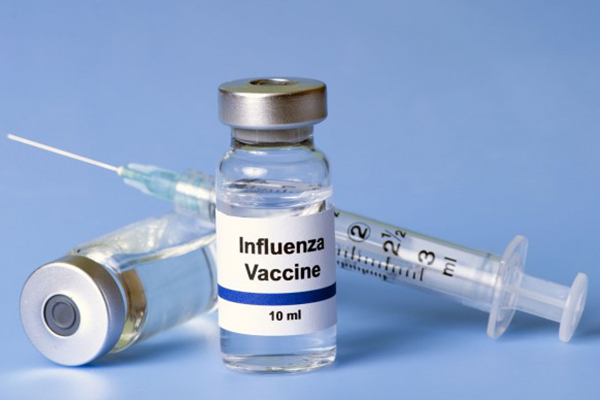
Each fall, doctors stress the importance of getting a flu shot: influenza is the most frequent cause of death from a vaccine-preventable disease in the United States. But on-time delivery of the vaccine can be tenuous, and there can be shortages during times of peak demand, as seen in 2014.
Research co-authored by Fuqiang Zhang, professor of operations and manufacturing management at Washington University in St. Louis’ Olin Business School, proposes a new contract scheme for the vaccine supply chain that could reduce patient wait time.

“In the past, we have seen major flu vaccine shortages during the vaccination season, even though the total supply for the flu vaccines was abundant,” Zhang said. “The major reason for this is because of late delivery.”
The process begins months in advance of influenza season. Starting in January, manufacturers make educated guesses about what flu strains the federal government will target and start production of a vaccine to match. They try to make a large quantity that will be ready to sell to retailers by vaccination season, which usually runs from late September to mid-November. The U.S. Food and Drug Administration makes its vaccine recommendation in February or March. If manufacturers have guessed incorrectly on any of the strains, they must restart that part of production.
Retailers, aware of the manufacturers’ risk, anticipate potential delay in shipments and may commit to smaller orders to avoid requesting a large supply that could arrive in late fall, when public demand will be down, and then being left with unused doses. The manufacturers, knowing that retailers will be cautious, are reluctant to produce a large amount before the FDA’s final announcement.
The manufacturer-retail gap is called a negative feedback loop. The result can be a shortage during the period of peak demand, as happened in 2014.
“Two parties are making their own decisions, but they are dependent on each other,” Zhang said. “When you have a decentralized supply chain with independent parties and they are self-interested, they may not want to make decisions that are optimal for the entire supply chain. They will make decisions that maximize their own payoff or profit.
“That’s a key issue behind this flu vaccine shortage problem,” he said.
Zhang teamed with Tinglong Dai of Johns Hopkins University and Soo-Haeng Cho from Carnegie Mellon University and examined the current supply chain process from start to finish.
In the research, recently accepted by the journal Manufacturing & Service Operations Management, Zhang and his partners propose a new solution called a Buyback and Late Rebate (BLR) contract.
Both buybacks (returns for time sensitive products) and rebates on late shipments have been used separately in an attempt to alleviate the flu vaccine negative feedback loop, with limited success. Zhang said the combined incentive approach will make a big difference in fixing the supply chain gaps.
“If you use buyback and late rebate separately, they don’t solve the whole problem,” Zhang said. “We found that combining these two incentive contract terms, we optimize the supply chain’s performance and maximize its efficiency.”
Zhang and his co-authors believe that the combination of 100-percent buyback and rebates on late shipments would motivate retailers to commit to larger orders, which in turn would lead manufacturers to commit to greater and more prompt production. The negative feedback loop would be broken, and a steady, reliable flow of vaccine would be available, to the benefit of manufacturers, retailers, and patients.
“We looked at incentive issues for the different parties, and then tried to provide a holistic solution to the problem,” Zhang said.
Zhang is available for interviews on this research and may be reached at fzhang22@wustl.edu


